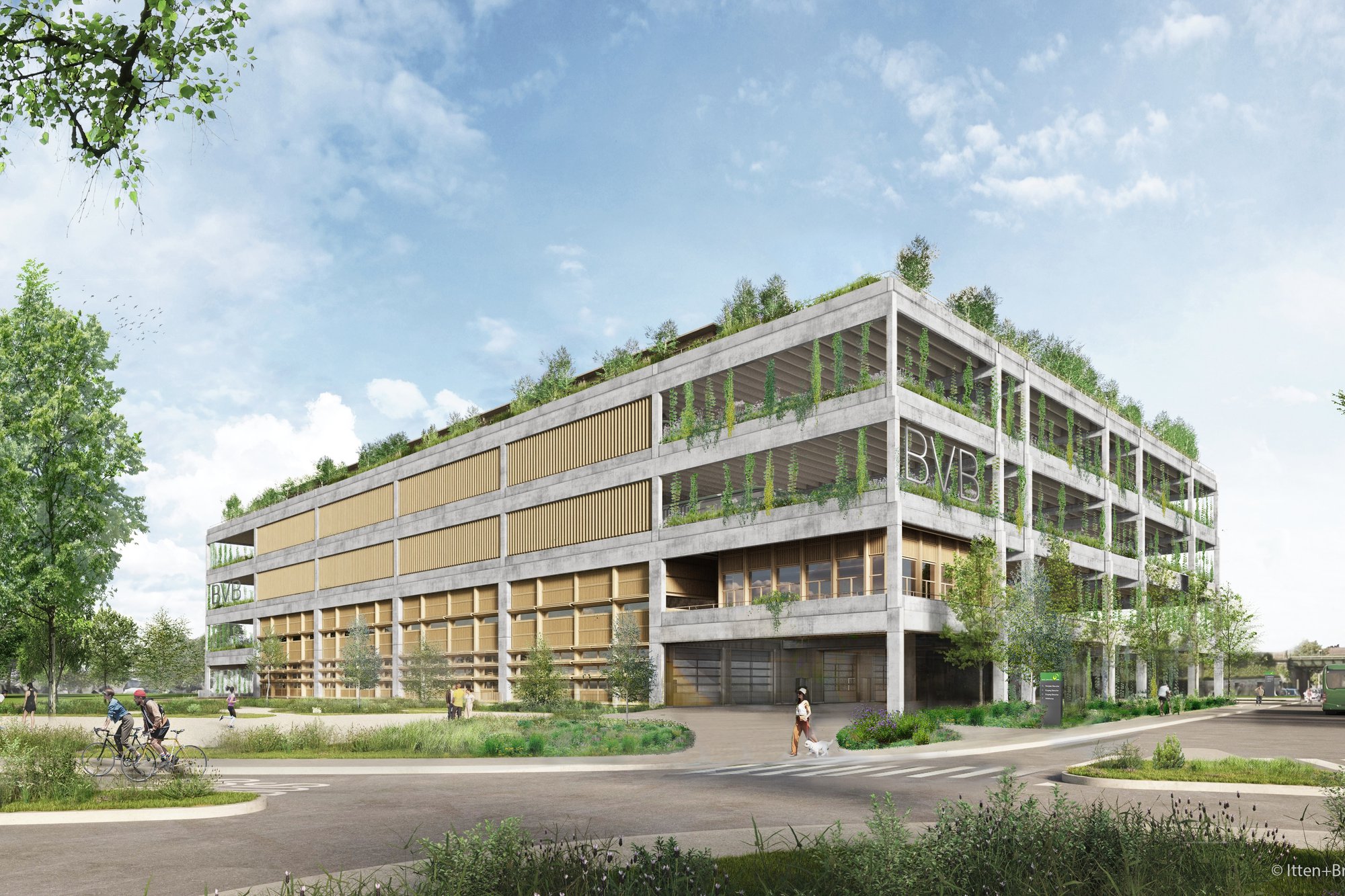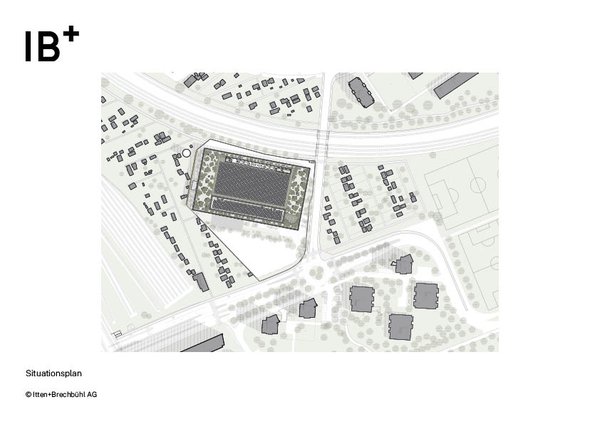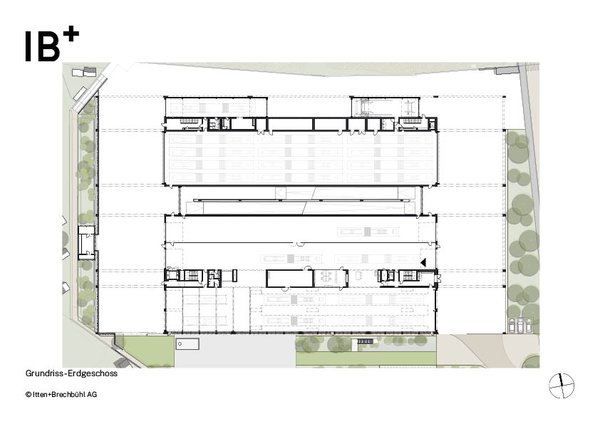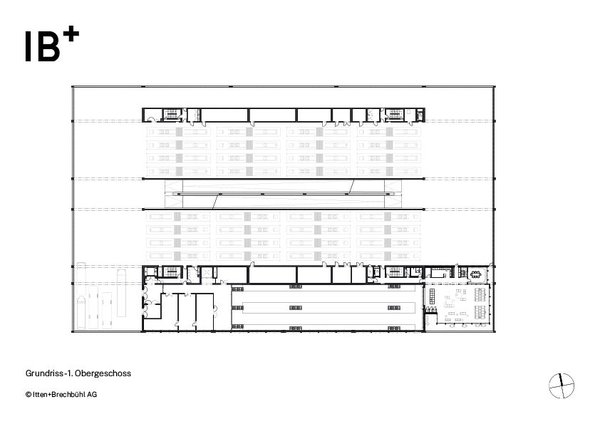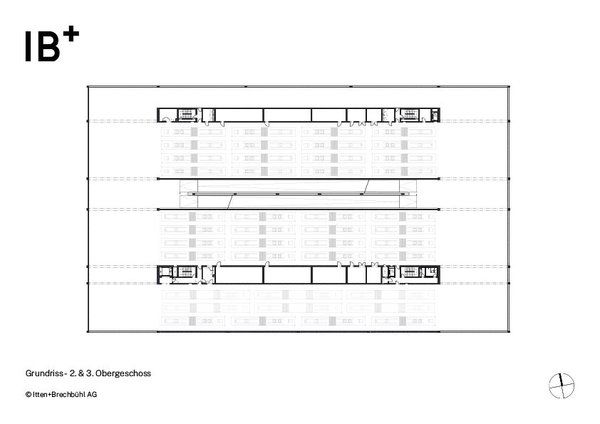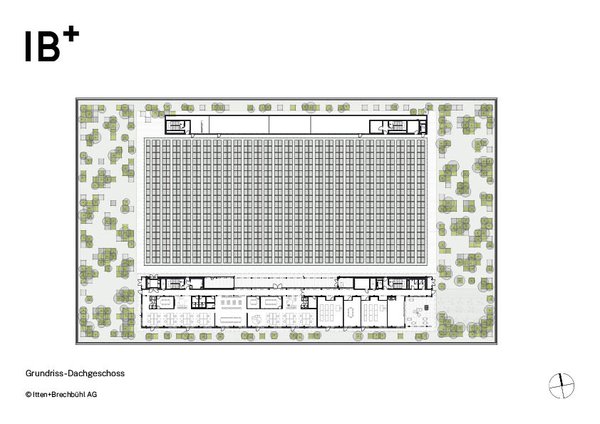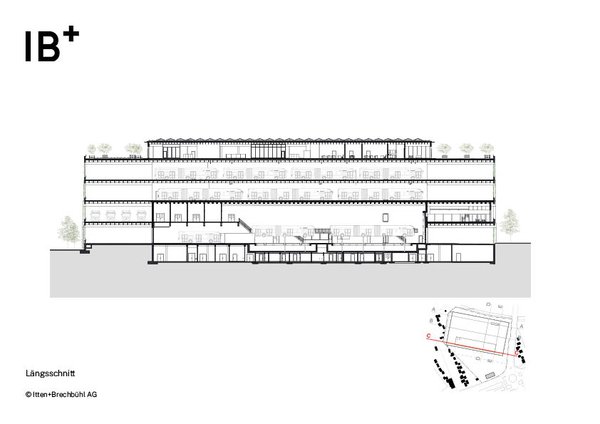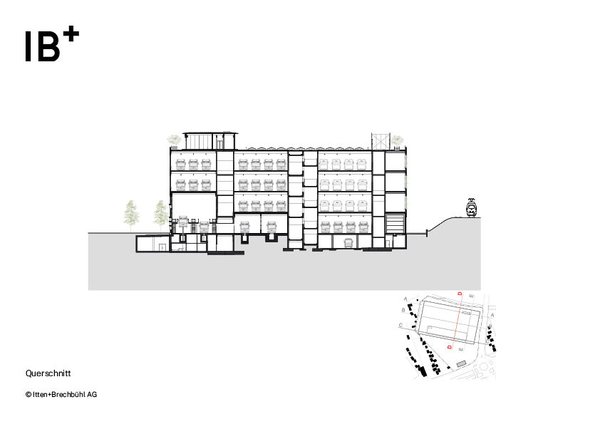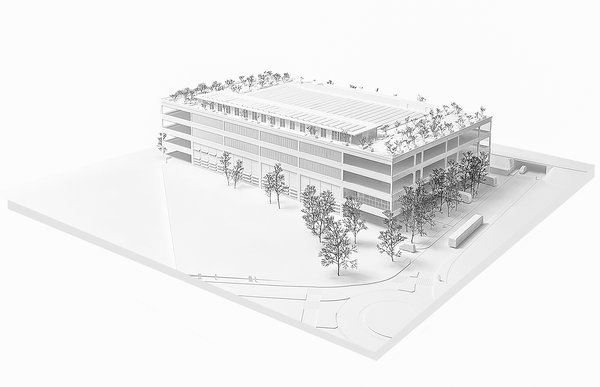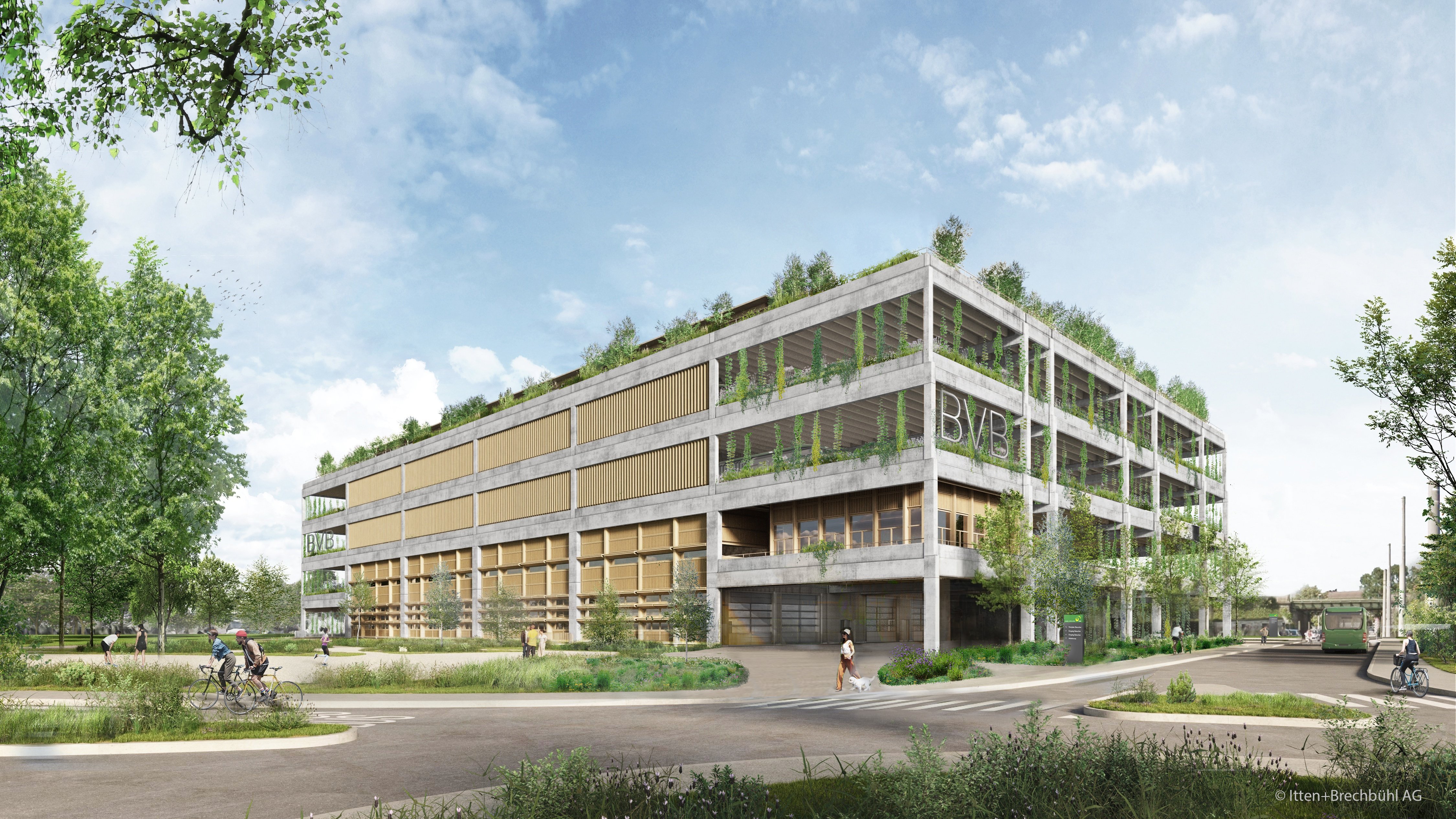
Back
Basel, Schweiz
New building Garage Rank
| Program | Bus garage for 144 electric buses; charging infrastructure, workshop, offices, training rooms, lounges, roof garden |
| Client | Basler Verkehrs-Betriebe BVB |
| Planning / Construction | 06/2021–04/2027 |
| Services provided by IB |
|
| Surface area | 40'080 m2 |
| Construction volume | 246'100 m3 |
Basler Verkehrs-Betriebe (BVB) aims to modernize its entire fleet by 2027, transitioning completely to electric buses to operate public transport using 100% renewable energy. In accordance with legal requirements, converting the system to e-buses also requires the new Garage Rank to be constructed to ensure the Basel City canton public transport operation with 100% renewable energy by 2027.
Initially constructed in 1957 and extended in the 1970s, Garage Rank no longer meets today’s requirements and offers too little space for a bus fleet and contemporary infrastructure to accommodate a maximum fleet of 144 electric buses. Therefore, the existing parts of the building will be completely removed.
The precise urban positioning of the new construction in the north of the Rank site allows for future urban development in the south along the Grenzacherstrasse. The newly developed building typology is characterized by the load-bearing primary structure, which has been consistently shaped by vehicle movement requirements. The workshop and office areas are deliberately integrated into the structure as a secondary level.
The new building comprises above-ground e-bus parking areas across four floors, including the necessary charging infrastructure, as well as a workshop for vehicle maintenance. Office space and rooms for the transport service employees are also accommodated within the building.
The roof will be designed with intensive greenery and a roof garden surrounding a pavilion-like structure for offices and training courses. In line with the reuse concept, components from the existing Garage Rank construction will be repurposed. In addition to many other measures, this minimizes the impact on CO₂ emissions. The unsealing of surfaces and intensive roof greenery further ensure an important contribution to sustainability and biodiversity.
FURTHER INFORMATION